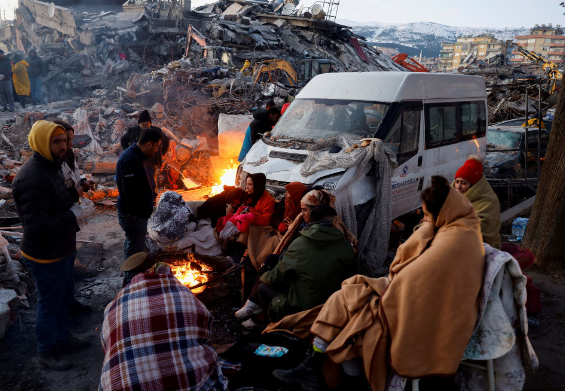
(Reuters) – Nine survivors were rescued from the rubble in Turkey on Tuesday, more than a week after a massive earthquake struck, as the focus of the aid effort shifted to helping people now struggling without shelter or enough food in the bitter cold.
The disaster, with a combined death toll in Turkey and neighbouring Syria exceeding 41,000, has ravaged cities in both countries, leaving many survivors homeless in near-freezing winter temperatures.
Turkish President Tayyip Erdogan has acknowledged problems in the initial response to the 7.8 magnitude quake that struck early on Feb. 6 but has said the situation is now under control.
“We are facing one of the greatest natural disasters not only in our country but also in the history of humanity,” Erdogan said in a televised speech in Ankara.
Those rescued on Tuesday included two brothers, aged 17 and 21, pulled from an apartment block in Kahramanmaras province, and a Syrian man and young woman in a leopard-print headscarf in Antakya rescued after over 200 hours in the rubble. There could be further people alive still to find, said one rescuer. But U.N. authorities have said the rescue phase is coming to a close, with the focus turning to shelter, food and schooling.
“People are suffering a lot. We applied to receive a tent, aid, or something, but up to now we didn’t receive anything,” said Hassan Saimoua, a refugee staying with his family in a playground in Turkey’s southeastern city of Gaziantep.
Saimoua and other Syrians who had found refuge in Gaziantep from the war at home but were made homeless by the quake used plastic sheets, blankets and cardboard to erect makeshift tents in the playground. “The needs are huge, increasing by the hour,” said Hans Henri P. Kluge, the World Health Organization’s director for Europe. “Some 26 million people across both countries need humanitarian assistance.”
“There are also growing concerns over emerging health issues linked to the cold weather, hygiene and sanitation, and the spread of infectious diseases – with vulnerable people especially at risk.”





